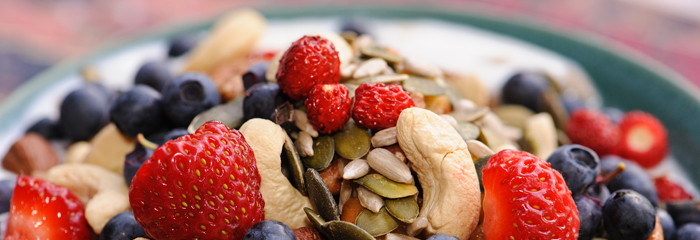The importance of fibre

Fibre contributes very little in terms of nutrients or calories to the body, so why is it so important? Well amongst other reasons it turns out that if the microbes in the digestive tract don’t get sufficient fibre from food, they begin to digest the protective layer of mucous that lines the gut. This can start to happen within a few days of eating a low fibre diet. Without the protective mucous layer the gut wall is susceptible to infection by pathogenic bacteria and inflammation. It turns out that purified forms of prebiotic fibre as found in some processed foods and supplements is not sufficient to stop the gut microbes from eating the protective mucous (2). The take home message from this research is to eat a wide range of high fibre foods. This has a direct effect on the balance of bacteria in the gut and on on the health of the colon wall.
Good sources of fibre include:
- Fruit and vegetables
- Whole grains such as brown rice, red rice, quinoa, millet, oats, barley, rye and buckwheat
- Pulses such as chickpeas, lentils, mung beans, aduki beans and cannellini beans
- Nuts and seeds such as pumpkin seeds, flax seeds, chia seeds, hazelnuts, almonds, walnuts and chestnuts.
- Sea vegetables such as nori, kombu, dulse, arame, hijiki and wakame.
You will notice that these sources of fibre are all plant foods. Animal products such as meat, fish, eggs and cheese do not contain any fibre.
2. Mahesh S, Desai et al. A dietary fibre-deprived gut microbiota degrades the colonic mucous barrier and enhances pathogen susceptibility. Cell November 2016. Vol 167;p1339–1353